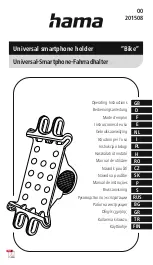
Sen sor As sem bly
2.2
Power Sup ply
The Model S214 operates from a +24VDC
(nominal) input. This unregulated source is
fed to a converter board that produces
voltages (see figure 4). These signals are the
source for operating all of the circuitry on the
control and the display boards, and supplying
the sensor with power. Terminal connections
inside of the housing have been provided for
accepting the input power.
2.3
Con trol Elec tron ics
The control electronics are centered around an
eight bit microprocessor (figure 5). The
Sensor Signal, the CAL Switch, the
Non-Volatile Memory (NOVRAM), and
certain fault conditions are monitored as
inputs. By processing these inputs, the
following outputs are generated: 4-20mA
Analog Output Signal, Digital Display
Indications, and Calibration Values to the
NOVRAM.
As the microprocessor (MPU) receives and
processes the inputs, it determines what value
is output to the display and the 4-20mA
current generator. When the CAL Switch is
activated, the MPU allows the user to choose
between the Calibration and the Test Gas
modes. While the unit is in one of these
modes, the MPU will fix the 4-20mA output
signal to 1.5mA (0mA is signal optional for
the calibration mode only).
fig ure 4
fig ure 5
Calibration Mode
: When the unit is placed
in this mode, the MPU will look at the signal
from the sensor and determine when to accept
the calibration value. This value is stored in
NOVRAM and is used to adjust the digital
potentiometers associated with the Input
Amplifier. During calibration the
microprocessor will output a 1.5mA analog
signal (0mA is optional).
Test Gas Mode
: In this mode, the MPU will
output the gas concentration to the display.
When the gas concentration drops below 5%
of full scale, the unit will return to normal
operation. The purpose of this mode is to
check the response of the unit to a known
level of gas and determine if calibration is
necessary, while the output current remains at
1.5mA.
4
GENERAL MONITORS
Model S214









































